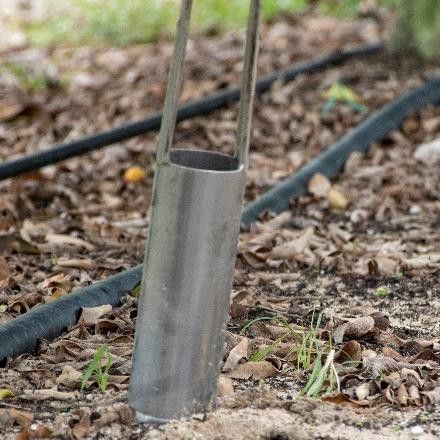
Credit: T. R. Weeks, UF/IFAS
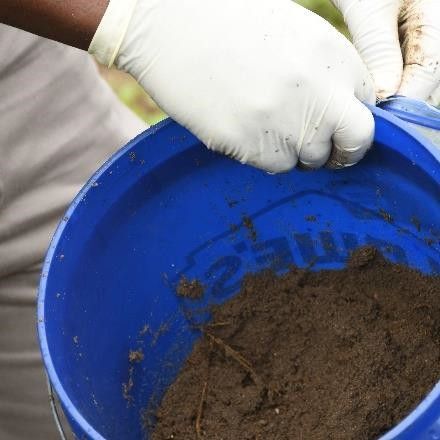
Credit: T. R. Weeks, UF/IFAS
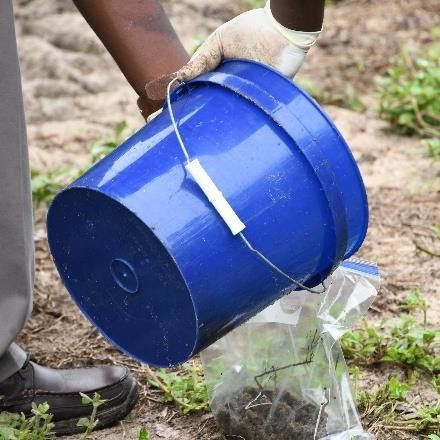
Credit: T. R. Weeks, UF/IFAS
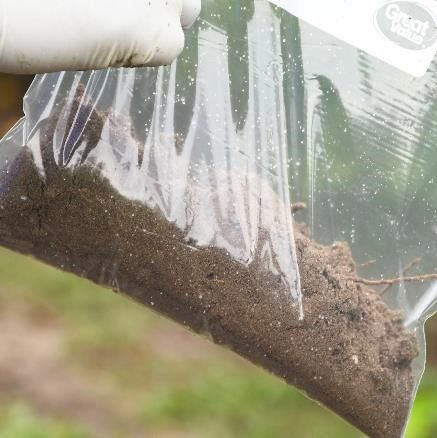
Credit: T. R. Weeks, UF/IFAS
Goal
- Standard procedures for sampling, preparing, and analyzing soil should be followed for meaningful interpretations of the test results and accurate recommendations.
Timing
- In Florida, soil samples should be collected once per year at the end of the summer rainy season and before fall fertilization (August to October) or when a fertilization program is about to start.
- The accuracy of soil test interpretations (Table 1) depends on how well the soil sample represents the grove block or management unit in question.
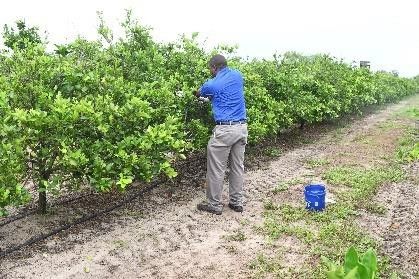
Credit: T. R. Weeks, UF/IFAS
Technique
- Each soil sample should consist of one soil core taken about 8 inches deep at the dripline or near the wetted area of the microjet. Repeat for 15 to 20 trees within the area wetted by the irrigation system in the zone of maximum root activity and add them to a plastic bucket.
- Sampled areas should be representative of grove blocks where samples were collected. The area should contain similar soil types with trees of uniform size and vigor.
- Thoroughly mix the 15 to 20 cores in a nonmetal bucket to form a composite sample. Take a subsample from this mixture and place about 200 to 400 mL (6 to 12 fl oz, depending on the laboratory) into a labeled plastic bag. If nitrogen forms such as ammonium or nitrate will be analyzed, keep the samples frozen until analysis to avoid loss of ammonia.
Preparation for Analysis and Interpretation
- Soil samples should be air-dried before shipping to the laboratory for analysis.
- The basic soil-analysis package run by most agricultural laboratories includes soil pH and extractable P, K, Ca, Mg, and micronutrients.
- Because extractable nutrients are measured, the magnitude of soil-test values may differ between different laboratories, but this difference is not a concern as long as the extraction method is calibrated for citrus.
- The laboratory interprets each soil test result as very low, low, medium, high, or very high and may also provide fertilizer recommendations accordingly. Citrus growers can independently interpret the numerical results according to UF/IFAS guidelines based on the extractant used (Tables 1 and 2). Do not follow interpretations from other sources and regions.
- The interpretations should be used to make management decisions regarding soil pH adjustment or fertilizer application (Table 2).
Interpreting Results